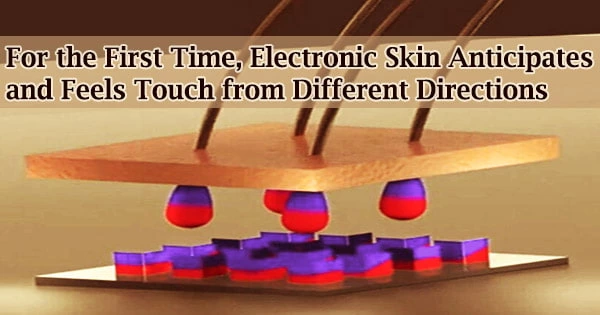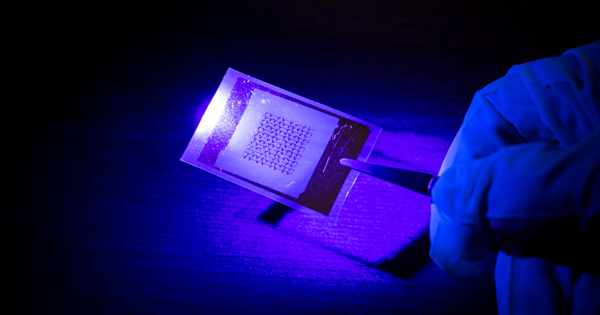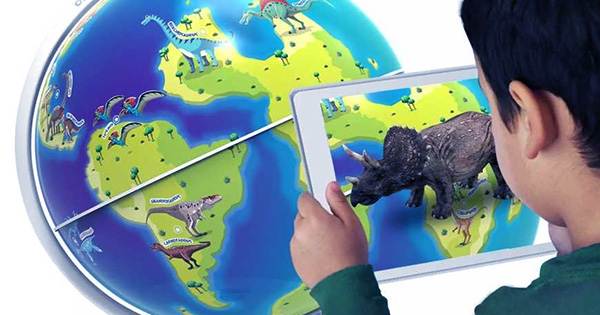Researchers from Dresden and Chemnitz have made significant advancements in the creation of sensitive electronic skin (e-skin) with built-in synthetic hairs. Electronic systems called “e-skins” are adaptable and aim to replicate the sensitivity of natural human skin.
Artificial skin for humanoid robots and androids is used in a variety of applications, including skin replacement and medical sensors on the body. On human skin, even the tiniest surface hairs are able to detect, anticipate, and even identify the direction of contact. Modern electronic skin systems are unable to obtain this crucial information about their surroundings because they lack this capability.
Developing incredibly sensitive and direction-dependent 3D magnetic field sensors that can be incorporated into an e-skin system has been the focus of recent research led by Prof. Dr. Oliver G. Schmidt, head of the Professorship of Material Systems for Nanoelectronics and Scientific Director of the Research Center for Materials, Architectures, and Integration of Nanomembranes (MAIN) at Chemnitz University of Technology (active matrix).
The researchers achieved a significant advancement toward imitating the natural feel of human skin by using a brand-new method for the miniaturization and integration of 3D device arrays. The current issue of the journal Nature Communications contains the researchers’ findings.
Christian Becker, Ph.D. student in Prof. Schmidt’s research group at MAIN and the first author of the study says:
“Our approach allows a precise spatial arrangement of functional sensor elements in 3D that can be mass-produced in a parallel manufacturing process. Such sensor systems are extremely difficult to generate by established microelectronic fabrication methods.”
The combination of active-matrix magnetic sensors with self-assembling micro-origami architectures is a completely new approach to miniaturize and integrate high-resolution 3D sensing systems.
Dr. Daniil Karnaushenko
New approach: Elegant origami technology integrates 3D sensors with microelectronic circuitry
An anisotropic magnetoresistance (AMR) sensor is the main component of the sensor system that the research team has presented. Magnetic field changes can be precisely determined with an AMR sensor.
AMR sensors are being employed in a range of devices, such as cars as speed sensors or to figure out the position and angle of moving parts. The researchers made use of the “micro-origami method” to create the extremely small sensor system.
AMR sensor components are folded into three-dimensional architectures using this technique in order to resolve the magnetic vector field in three dimensions. With the use of micro-origami, several microelectronic parts can be arranged in a geometry that is not possible with any existing microfabrication techniques.
“Micro-origami processes were developed more than 20 years ago, and it is wonderful to see how the full potential of this elegant technology can now be exploited for novel microelectronic applications,” says Prof. Oliver G. Schmidt.
The study team combined the 3D micro-origami magnetic sensor array into a single active matrix so that microelectronic circuitry could easily address and read out each individual sensor.
“The combination of active-matrix magnetic sensors with self-assembling micro-origami architectures is a completely new approach to miniaturize and integrate high-resolution 3D sensing systems,” says Dr. Daniil Karnaushenko, who contributed decisively towards the concept, design, and implementation of the project.
Tiny hairs anticipate and perceive the direction of touch in real time
The research team has been successful in fusing fine magnetically rooted hairs with 3D magnetic field sensors to create an artificial e-skin. In the same way that nerves are intertwined throughout real skin, the electronics and sensors in the e-skin are placed into an elastomeric material.
The underlying 3D magnetic sensors can track the movement and precise location of the magnetic root when the hair is touched and bends. Therefore, in addition to registering the bare movement of the hair, the sensor matrix can also pinpoint its precise direction.
Every hair on an e-skin transforms into a complete sensor unit that can perceive and detect changes in the immediate area, much like on genuine human skin. A new kind of touch-sensitive perception via an e-skin system is provided by the magneto-mechanical interaction between a 3D magnetic sensor and magnetic hair root in real-time.
In situations where humans and robots collaborate closely, this competence is crucial. For instance, the robot can sense upcoming interactions with a human companion in great detail well in advance of either an intentional encounter or an unintended collision.
















